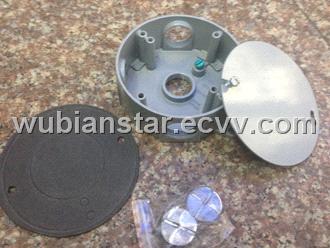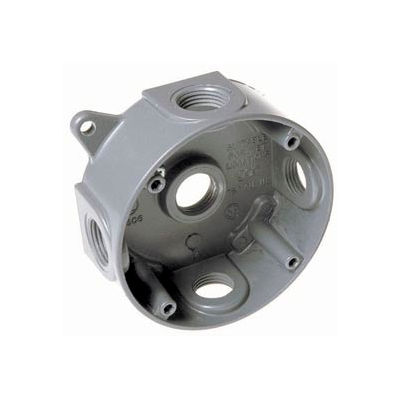
It is much more rugged, and 1200 feet is a long pull. Use direct burial cable, even if run in conduit. I would run a cable with half a dozen fibers or more, as the incremental cost of extra fibers in a cable is minimal. I would go with single mode fiber, although multi mode will work fine at that distance as well. It will be worth the extra cost in the long run (literally and figuratively). Suffice it to say, the warning of ground potential differences is VERY real. Thankfully, the PC's themselves survived. A Dell docking station also on that switch was killed too. I never got to see what the connected equipment looked like, suffice it to say, they had to replace it. I *think* this was a coupler they had used, not really sure WHAT it was:

Within a few weels, they had a BAD storm, and heard a loud POP.
WEATHERPROOF SPLICE BOX BURRY INSTALL
I knew and warned about this potential issue, but the install happened anyway (was just needed short term, and had already bought the parts). This past summer, some folks I know ran 2x Cat6 between two houses (network on one, phone on another).

Yup.always heard that, recently, I saw it. Justin_Mc wrote:More importantly, the two buildings will have different electrical grounds, which means you could have a current running through the grounds on your equipment on both ends-frying gear (and possibly - though unlikely-people).(this is also one of the reasons you use pvc conduit) Also, a lightning strike on one building would likely fry gear in both buildings with copper.Įdit: Here's an article I found. This is what should be done, what will be done may be a little or a lot different. What ever you do, put at least 3 pull strings in the conduit.Make sure you have a drip loop on all cables you have exiting the pipe and place all equipment away from the opening. If the conduit is not coming up from the floor and will exiting through a wall, you should figure that when water enters the conduit it is going to make its way down the conduit and exit onto every piece of electronic you have under that conduit in the lower building.*Make sure you run 6-12 pairs of fiber and have someone terminate them with a 20+ foot service loop at each end.This way when you need to get to either of this boxes, you can use a metal detector to help you find where they are. Place a steal plate over each box that is at least 24" square and is burred above each of the hand boxes.Like JAITM said, put in two hand boxes at 400' and 800'.Use 3" conduits for easy pulling and room to grow.In the future when someone is digging with a backhoe, there is a better chance of them not tearing the conduit in two Dig the trench about 3-4 feet underground so it will be harder to reach when others dig around it.Run two conduits, the second will be a spare.In your case, it may not be practical to run two conduits, trenching 3-4' underground, or burying the conduit(s) in cement.
WEATHERPROOF SPLICE BOX BURRY CODE
Bury the conduit and fill in the the space around the box with an NEC Code approved material leaving the cover exposed and easily accessible.These are my recommendations when running conduit. Attach the cover with the screws and neoprene gasket provided.ħ. Mount the electrical connection device needed for your project to the inside of the junction box, and run wires through the conduit connecting them to the device according to the manufacturer’s instructions to create a proper connection.Ħ. Attach conduit to the connection fittings with cement.ĥ. Create a trench for the conduit and junction box according to all electrical codes, and place the junction box and the conduit in the ground.Ĥ. For a water tight connection, you can also use male terminal adapters and washers for a watertight application.ģ. Cement the necessary PVC connection fittings of choice u sing a dauber and the correct type of CANTEX cement (indicated in the CANTEX full-line product catalog). Box adapters are used in this image as the connection fittings. Electrical Junction Boxes should never be installed in heavily trafficked areas where continued exposure to weight on might break down their covers. See Article 314 for all code details before installing. The cover must be completely exposed and the boxes must be completely accessible. Listed boxes can only be covered by gravel, light aggregate, or non-cohesive granulated soil if their location is effectively identified and accessible for excavation. Article 314-29 of the National Electrical Code states that listed junction boxes may be buried without excavating parts of buildings, sidewalks, other paving, or earth.

The in-ground installation for CANTEX PVC junction boxes is also simple, but always be sure to follow all national and regional electrical codes.


 0 kommentar(er)
0 kommentar(er)
